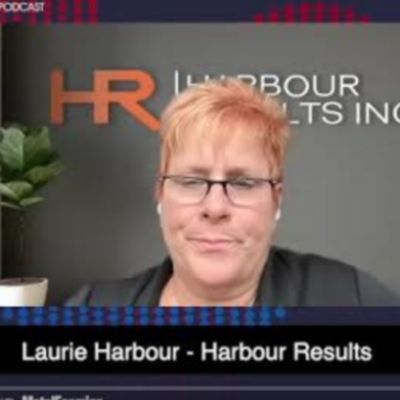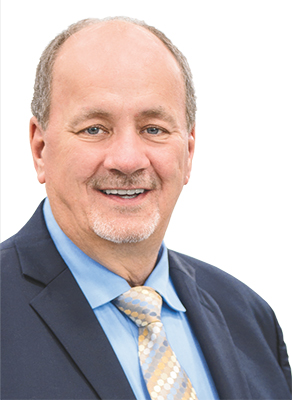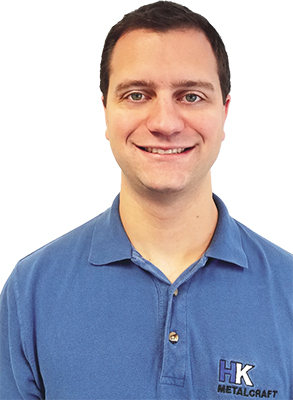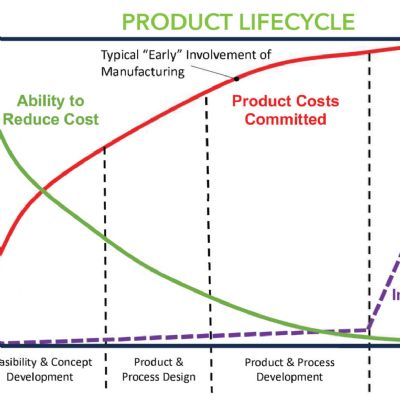Building on our conversation with Carroll, and his emphasis on innovation as critical to unlocking a flourishing manufacturing industry, we asked PMA members to share their views of the future. Current PMA Chairman Dave Arndt, president of metalformer Pentaflex, Springfield, OH, immediately emphasizes the labor issue plaguing manufacturers, noting that automation will continue to replace manual labor in many instances. However, this leads to an increased need for more skilled technicians to program, operate and maintain robots and other automated equipment, Arndt says.
We asked Arndt to describe key areas of production where metalformers can create a unique value proposition for their customers. His big three:
• 3D printing for prototyping, fixture build, fabrication of spare die parts, etc., which can become a key advantage;
• Optimizing design of robotic weld cells to improve welding capabilities; and
• Gaining working knowledge of designing tooling to take full advantage of servo-press capabilities.
“At Pentaflex, we’re focusing on taking our servo presses to the next level in terms of productivity and quality by optimizing our tool-and-die design and build process to really take advantage of what servo presses can do,” he says. “We also will look to update our press-control systems to ensure that we’re prepared for the next several years.”
And, asked to identify the characteristics that managers must have to lead their metalforming companies into a future that hinges on innovation, as Carroll notes, Arndt shares these three:
• Ability to look at the big picture as it relates to the future of the business relative to staffing, technology and the economy.
• Ability to understand the what's important to the workers, and then learn how to motivate them to improve productivity and quality.
• Ability to negotiate with all shareholders—customers, suppliers, owners, the community and your employees.
“I, my management team and our technical team participate in as many learning experiences as possible to stay informed on new technology—automation, tooling, 3D printing, servo presses, robotic welding, etc. This is a critical role that PMA has filled, and will continue to fill, by providing webinars and conferences, tradeshows and other learning opportunities. And, when it comes to filling the talent void, we stay actively involved in our schools and throughout the community, trying to ensure that we will be able to develop the workforce of the future capable of driving agility and competitiveness for our company.”
Automation is Top of Mind Nearly Everywhere
Automation also is on the mind of Ron Lowry, CEO of metalformer Dayton Rogers and Arndt’s predecessor as PMA chairman, who notes that in the last five years his company has reduced direct labor input into an average product by 30 percent.
“We think we can continue to improve in this area,” Lowry says, “and with these improvements we will be able to produce 20 percent more with the same amount of direct labor. That will allow us to increase profitability. This not only is good business practice, but it is necessary in order to overcome the challenges presented by the lack of skilled labor and the need to attract young, motivated workers to work in manufacturing.”
Lowry expects automation to grow in use at his company, and at others in our industry, in a variety of applications—press tending, inspection and—most notably—in data analysis to foster faster and more analytical decision-making.
“As we become more automated in the plant, the data-analysis and decision-making processes also must become automated,” says Lowry. By doing so, we can increase sales and enhance quality without adding employees. “At Dayton Rogers, we’re looking at upgrading our ERP capabilities, and I know that other metalforming companies are doing the same. We collect a lot of good data throughout our operations. We need to become better skilled at formatting and evaluating that data so that we can make quicker, better decisions.”
Dayton Rogers also aggressively seeks to innovate, a primary responsibility that rests on the shoulders of a key business unit at the company called the Technical Development Center (TDC). Here, a dedicated team focuses efforts on prototyping and custom design work, fully aligned with the directives issued by Carroll. Also, as described by Lowry, the TDC spearheads the firm’s organizational approach to evaluating and adopting new technology and equipment.
“Our management committee regularly reviews the opportunities and recommendations coming from the TDC,” says Lowry. “We’re always on the lookout for opportunities to either enhance our existing core competencies or add new ones, and the TDC plays a vital role here.”
Along with counting innovation as a cornerstone to future growth and prosperity, Lowry also identifies growth through acquisition as a current and future trend prevalent in the metalforming industry. Noting higher costs of doing business resulting from government regulations, increased certification and registration requirements and the like, metalformers will need to be of a certain size and volume in order to absorb those costs, he says.
For example, Lowry notes that regulation compliance costs his company upward of $10,000 per employee annually. Costs such as these can be very real impediments to metalformers as they strive to continue to invest in innovation and technology.
“Simply, we as companies must be able to bring in more business and realize the cost benefits, without adding a lot of overhead,” Lowry insists. “Growth through acquisition is happening all over our industry, and will only continue to expand. I think that for most companies in our industry, you need to be in the $15 to $20 million range or larger to really thrive moving forward.”
Culture, Culture and More Culture
How does PMA play a role in helping metalformers manage in a brave, new world? Two services provided by PMA immediately come to the mind of Josh Hopp, president of New Jersey metalformer HK Metalcraft: networking opportunities and benchmarking reports. A fourth-generation owner who took the reins of HK Metalcraft in 2014, Hopp acknowledges that having “grown up with PMA and in the metalforming industry, I know there are people and companies within the association that operate in a worldclass manner. The opportunities to benchmark our performance against worldclass companies, through tours and other events orchestrated by PMA, are magnificent.”
One area in which Hopp and other metalformers use benchmarking and networking opportunities to improve performance involves optimizing the use of new ERP systems to automate data collection and analysis, and improve decision-making, as previously mentioned by Arndt and Lowry. “In many cases,” says Hopp, “we as metalformers rely more on each other for advice on ERP implementation and application than we do on the software suppliers themselves.”
Hopp also can’t say enough about what he’s learned from touring PMA-member facilities, emphasizing that the lessons learned translate into actions that are preparing HK Metalcraft for future growth and prosperity.
“There are so many worldclass metalformers amongst the PMA membership,” he says. “Every time I tour one of these companies, I bring back ideas that we can implement to help ensure future success.
“For example, we feel that 5S and lean initiatives are critical as we seek to create an environment in which people want to work,” he continues. “The best companies, and where I see HK Metalcraft heading, are those that provide an environment in which people take pride in their work and are excited to be part of a forward-moving company.
“In the end,” Hopp adds, “we’re building a culture of growth and progress, not a culture of complaining. And it’s motivating, to me and my peers that engage with PMA, to learn from others seeking to attain the same goals that we yearn to achieve. I see the relationships formed and solidified through PMA activities as critical to propelling my company and others on to future success.”
Final Thoughts
Offering his final thoughts, and echoing those of Hopp, PMA’s 2017 Chairman Dave Arndt adds:
“In PMA’s 75th year, it has accomplished a great deal in helping small companies such as mine, as well as larger stampers and fabricators, interact and learn from each other. We’re able to discuss common challenges and opportunities in a fairly open forum, able to bounce ideas off of each other and hear how others handle situations.
“Going forward, PMA will be continue to be a very important organization for our industry. So, Happy 75th, PMA!” MF
View Glossary of Metalforming Terms
See also: Precision Metalforming Association
Technologies: Management
Comments
Must be logged in to post a comment. Sign in or Create an Account
There are no comments posted. Management
ManagementDOL Announces Nearly $200 Million Allotted for Registered Ap...
Friday, March 1, 2024
 Management
ManagementLaurie Harbour, President, Harbour Results, Inc., E707
Wednesday, January 24, 2024
 Podcast
Podcast 






 Futurist Jim Carroll noted in a blog post earlier this year that “while the majority of my audience appreciates a whirlwind ride into the future, there are others who just wish the future would go away... Leaders today must steer their organizations into a fast-paced future—through the shoals of disruption, the emergence of new competitors, technology, automation and other challenges—while understanding that there is a core group that will do little to embrace that change. It’s the Flintstones and the Jetsons, in one workplace!”
Futurist Jim Carroll noted in a blog post earlier this year that “while the majority of my audience appreciates a whirlwind ride into the future, there are others who just wish the future would go away... Leaders today must steer their organizations into a fast-paced future—through the shoals of disruption, the emergence of new competitors, technology, automation and other challenges—while understanding that there is a core group that will do little to embrace that change. It’s the Flintstones and the Jetsons, in one workplace!” When it comes to suppliers having input into product design, Carroll, as he often does, finds opportunity to learn from other industries and companies—in this case, Disney. “Disney practices what I call customer-oriented or ‘upside-down innovation,’” Carroll says. “The days of developing products and then taking them to customers and saying, ‘this is what we’ve come up with and now will sell to you’ are gone. Increasingly, we see manufacturers asking customers, ‘tell us what you need and we’ll figure out how to design and fabricate it.’”
When it comes to suppliers having input into product design, Carroll, as he often does, finds opportunity to learn from other industries and companies—in this case, Disney. “Disney practices what I call customer-oriented or ‘upside-down innovation,’” Carroll says. “The days of developing products and then taking them to customers and saying, ‘this is what we’ve come up with and now will sell to you’ are gone. Increasingly, we see manufacturers asking customers, ‘tell us what you need and we’ll figure out how to design and fabricate it.’”

